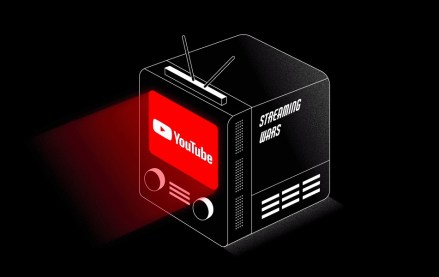Connect with execs from The New York Times, TIME, Dotdash Meredith and many more
Two-year-old sports streaming platform Dazn has millions of subscribers across seven markets and plans to be in 20 by 2022. To get there, it’s leaning on its engineering and product chops to sign up and retain customers.
Dazn has hundreds of developers, engineers and data scientists across the U.K., Poland and Holland that gather and interpret data on audiences in each of its markets. Chris Haigh, director of product, web, acquisition and retention, estimated 70 percent of Dazn’s developers work on acquisition product features while 10 percent work on retention. He expects this to switch as the platform matures. As it’s common for people to sign up just before a sporting event, the goal for Dazn is to then keep them there.
“Sports is highly passionate and highly engaging but hasn’t had the same digital revolution as newspapers, Netflix or Spotify,” said Haigh, speaking at an event hosted by subscription software firm Zuora in London last week. “Data is the No. 1 objective for every single employee’s personal objective at Dazn from the CEO downwards. We’re creating that culture of being closer to data.”
Because sports rights are cut regionally and over long periods of time, Dazn’s offer varies by market: Major League Baseball rights underpinned its launch in its first market, Japan; football league rights in Germany; and NFL rights in Canada. Dazn has built up 13 different cohorts of users based on how they watch Dazn, device, location and journeys before and after, to personalize acquisition and in-app journeys. For instance, someone in the Milan area signing up to the service three days before an A.C. Milan football match is likely to be a fan, so that person will see personalized landing pages and A.C. Milan’s trademark red and black color scheme.
Before launching in Italy last month, Dazn gathered data on the number of signups throughout the day by the second or minute before a big match. The signups were steady before exploding half an hour before kick-off. Digital streaming runs into tech problems; even Amazon came under fire for needing to improve streaming the U.S. Open. Having the signup data let Dazn build up its infrastructure in Italy to handle the audience.
“This saved our bacon,” Haigh said.
Dazn also is studying failed login attempts. It recently looked at failed login attempts within a three-month time frame in a certain area. Out of 5 million failed attempts, about 3 million successfully logged in shortly afterward. Of the 2 million unsuccessful login attempts, only 10 percent went on to change their passwords, but 1.8 million log-in attempts gave up. Haigh said Dazn is partly addressing this by re-architecting the backend but also by adding some friction to the signup process to avoid likely churners down the line.
To prevent people from canceling in the summer, when few sports are being played, Dazn added a pause feature during the cancel journey. Haigh estimates that re-subscriber numbers were 140 percent up from before it introduced the feature.
To keep engagement up when matches get boring, the sports publisher’s user-experience designers are trying to get people to interact, similar to how people do on Facebook, by crowdsourcing information from other fans.
Dazn has to balance its goals of entering new markets and getting deeper into existing markets. Compared to other broadcasters, Dazn has strong data capabilities, but so do Facebook and Amazon, said Charlie Beall, senior consultant at digital sports consultancy Seven League.
“We’re in a period of rights unbundling, and there will be a reconsolidation and rebundling in the future,” said Beall. “Dazn needs to have a decent proposition for rights acquiring. Amazon has far bigger pockets.”
Image courtesy of Dazn.
More in Future of TV

‘Walt Disney is not Mickey Mouse’: The modern creator career path, from full-time to founder
The business of being a creator isn’t a solo show. They have become full-on productions.

Future of TV Briefing: A preview of Digiday’s CTV Advertising Strategies event
This week’s Future of TV Briefing previews next week’s CTV Advertising Strategies event that I’ll be hosting with top brand and agency executives in New York City.

Future of TV Briefing: TV is YouTube’s top screen — except when counting views and among Gen Z viewers
This week’s Future of TV Briefing looks at how mobile still accounts for an overwhelming majority of YouTube video views and why some Gen Z viewers aren’t tuning into YouTube on TV screens.





